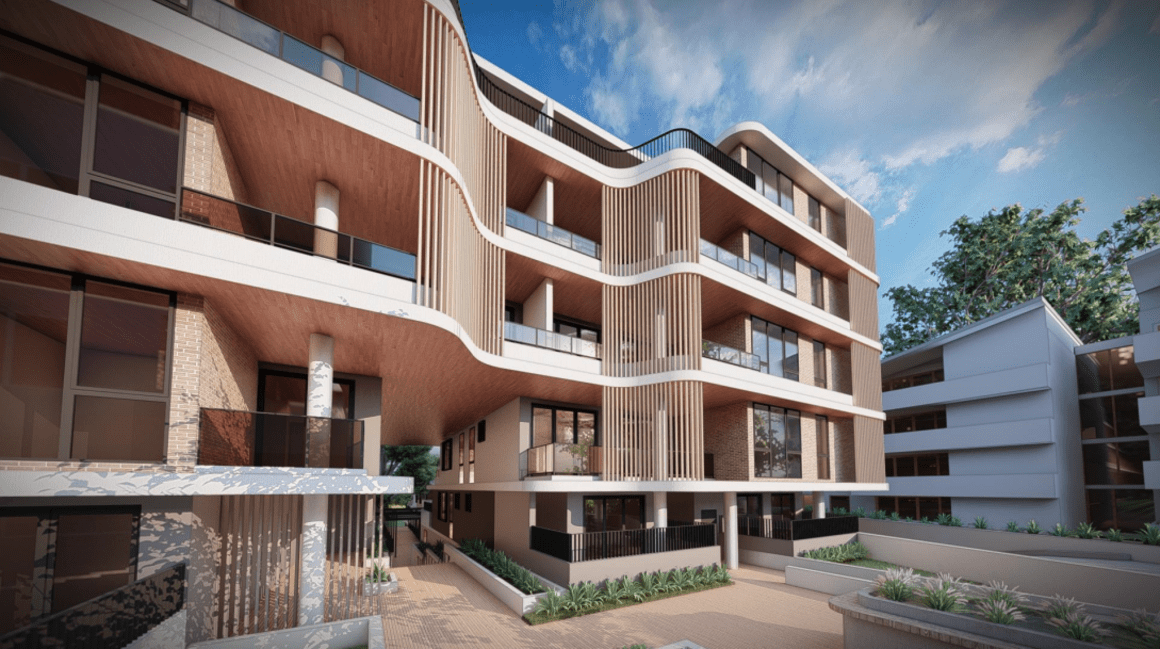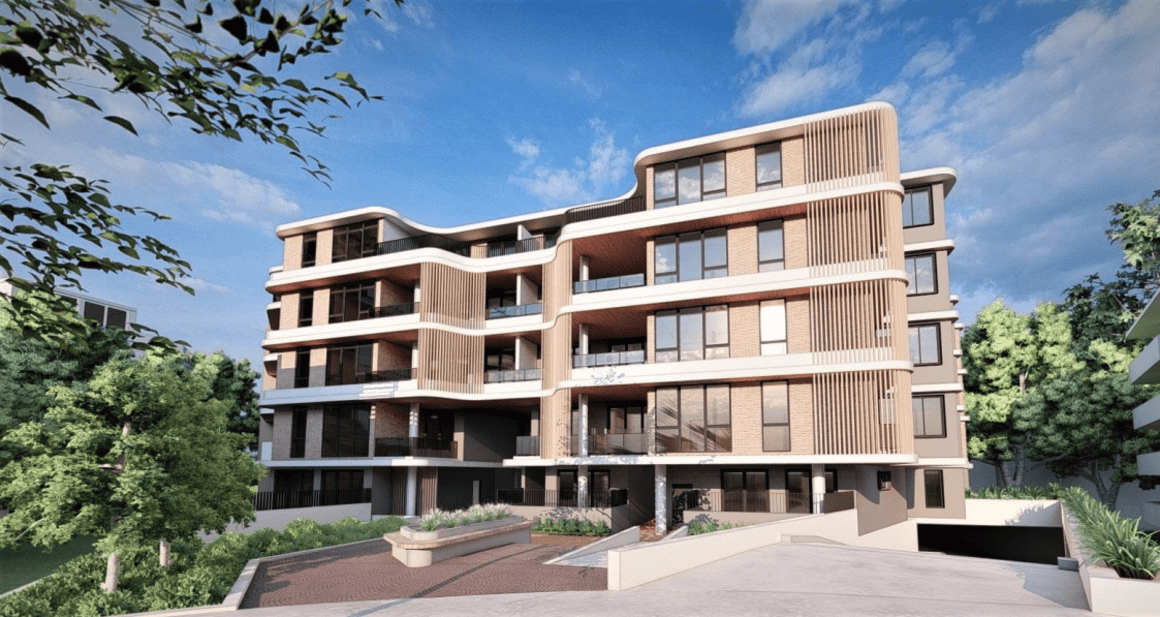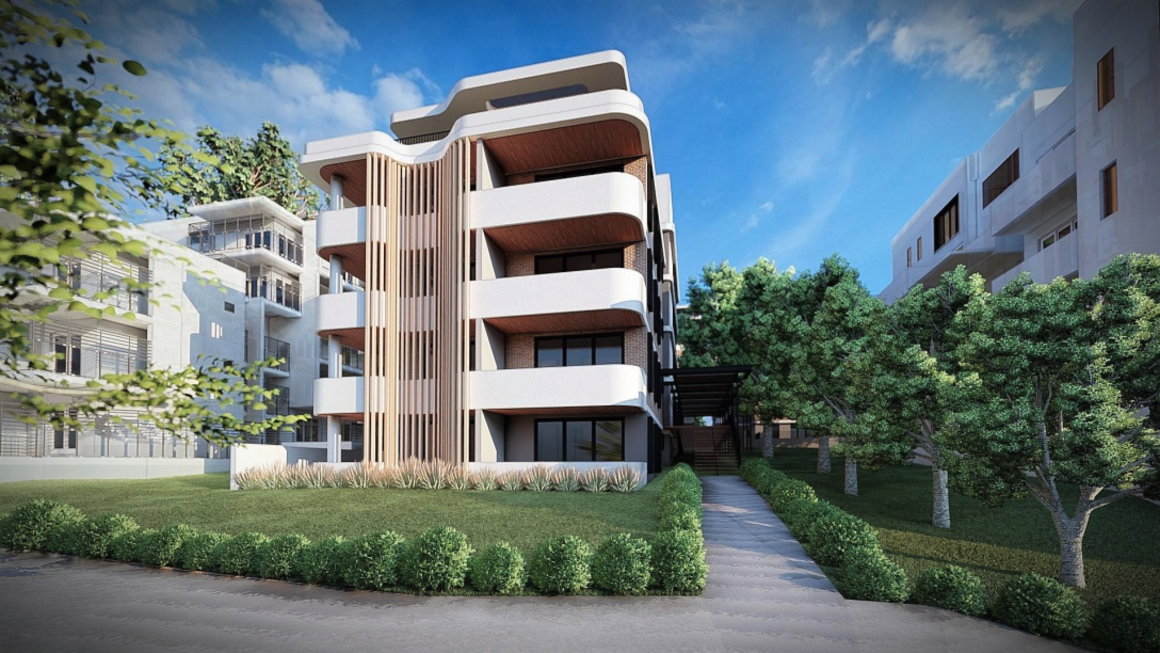First look: Apartments slated for final residential site along Kissing Point Road in Dundas

The small Parramatta suburb Dundas is set for a fresh new apartment development.
Plans have been submitted by HVH Investment Pty Ltd, directed by Chinese-born, Pymble-based Hung Shang, for a two-building development on an amalgamated 3318 sqm site across 7-7B St Andrews Street & 79-79A Kissing Point Road.
Centred largely around the future Dundas Light Rail Station, which is part of the Parramatta Light Rail project, due to be completed in 2024, the development is the final parcel of land to be consolidated into a residential flat development, set within walking distance to transport, retail, community and green amenity.
Two five-storey buildings will be constructed across the “arrow-shaped” site, with Building A fronting the cul-de-sac on St Andrews St and Building B oriented toward the busy Kissing Point Rd. Due to the topography of the site, Building B’s massing has been reduced, steeping down to allow the rooftop space and subsequent podium to be relatively hidden from the street view.
 Render of the proposed Dundas development. Credit: Texco Design
Render of the proposed Dundas development. Credit: Texco Design
Designed by the architects at Texco Design, with direction from Hsien Ming Lee, Building A will split 40 apartments into two transportation cores, with a 22-18 split between the western and eastern lift cores, creating a more liveable environment, while Building B will feature just 13 apartments.
Most of the apartments take advantage of the site’s favourable northerly orientation, which allows plenty of natural light into each of the homes, with projecting concrete shelves on each floor consequently incorporated to help to shade the opening from overexposure in the warmer months.
The building massing is also highly articulated, which allows for many apartments to be able to access dual aspects, thus promoting natural ventilation through the units, which helps passive cooling in the summer.
A mix of apartments will be delivered across both buildings, with six one-bedroom apartments penned, along with 34 two-bedroom and 13 three-bedroom apartments.
The design of the apartment layouts is kept fairly functional and efficient, with combined living, dining and kitchen areas created to fill the current market requirements.
Most of the kitchens have been provided with island benches, with sinks facing the living space, to ensure visual connectivity within the living space. The bedrooms, again, are a fairly standard fare for today’s Sydney housing market, with rectilinear layouts, and a wardrobe on one end.
“Where possible, we have expanded either the ensuites to master bedrooms, or the wardrobes into walk-in spaces for the larger units, to add a degree of luxuriousness to these primary bedrooms,” Lee says in the group's design statement."
Some of the apartments - namely the two and three-bedders - have also been afforded study corners, acting as informal extensions of the living spaces.
The proposed development features a neutral colour palette which is at once reflective of its street context, and more sophisticated, perhaps in part due to its cooler tones, in its blending of browns, greys and blacks. The predominant colour of the development is set by the choice of brown-grey bricks for most of the external walls.
“These massing's are occasionally broken up by vertical blocks of dark grey, and blade walls in dark brown.”
 Render of the proposed Dundas development. Credit: Texco Design
Render of the proposed Dundas development. Credit: Texco Design
Horizontally, the building is broken up by bands of white in the form of projecting slab edges. The slab edges feature rounded corners to soften the many corners and angles of the building mass, and also add a shadow line, under-lining each slab profile, which Lee says will help create a streamlined and almost fluid appearance to the building profile.
A further sense of rhythm and texture is added to the façade in the form of vertical bars for balustrades, and timber-coloured battens for privacy screening.
A six-metre-wide deep soil and landscaping zone will be incorporated along the northern boundary of Building A, which will form the principal communal open space for the development, as well as being a natural divider between Building’s A and B. The decked communal open space will be sheltered by awnings and pergolas to ensure a degree of shelter from the elements for pedestrians crossing between building blocks.
The rooftop of Building B will house further communal space with an open-air space featuring a recessive awning surrounding the lift and stairs lobby.
Combined with the natural amenity of being adjacent to the Dundas Public School, the site will also benefit from proximity to a small business pocket, located adjacent to the future light rail station, along with an abundance of green open spaces, including the Vineyard Creek Reserve to the North, the Winjoy Reserve to the West, the William Reserve to the East, as well as the Crowgey Street Reserve to the South.
The development site is currently occupied by two detached brick dwellings and brick church building, alongside an asphalt carpark.